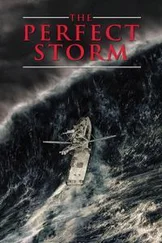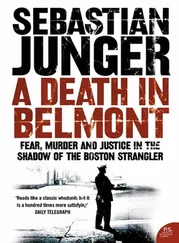But there is, perhaps, another way to look at all this. In the fifteen years of ethnic violence before the 1974 partition, hundreds of Cypriots on both sides were killed. In the twenty-five years since, there have been a total of sixteen—or about the same number that die on the island’s highways in a bad month. At a cost of ninety million dollars a year, the United Nations has brought calm to an intractable conflict zone—about what the recent NATO military operations in Kosovo cost for just two days. Of course, people have suffered and lost a great deal in Cyprus—especially all those uprooted from their homes and forced to start over again—but at least now, kept apart by the buffer, they have been given the chance to start over. That’s far better than what usually happens in war zones.
So perhaps what has passed as “The Cyprus Problem” all these years has actually been “The Cyprus Solution,” and perhaps the diplomats who periodically wring their hands over the ongoing stalemate on this island should actually be taking notes and trying to export it elsewhere. That would require new thinking among the power brokers of the West, and perhaps especially among those in Washington, embroiled in the latest crisis in the Balkans. Maybe what most needs to end is all the chatter about exit strategies. Those in power must recognize that there is no exit from bad history and that at certain times and in certain places the best that can be done is to simply stand between the fighters indefinitely and hope that someday they’ll get over it and move on—not in a year, not in ten years, but maybe eventually. Until then the least costly solution, in terms of both blood and money, is to give the Bosnians and Serbs and Kosovars of the planet what the Cypriots already have, a “dead zone” across which they can hurl accusations and threats in safety. At least it will give them something to talk about, and all that the rest of the world will have to suffer is the hearing of it.
Back in Lefkosa I leave Ayshen at the entrance to the Office of Public Information and watch her walk slowly, head bowed in sadness, up the entranceway. It occurs to me that it is the people like her—the earnest, the “peaceniks,” the goodhearted and forgiving—who are the last, quiet victims of this place. They are to be found in Bosnia and Serbia and Kosovo as well, of course, those who refuse to believe that a culture once torn apart can’t be put back together again, who forever wait for their day to come.
Late in the summer of 1808 two fur trappers named John Colter and John Potts decided to paddle up the Missouri River, deep into Blackfeet territory, to look for beaver. Colter had been there twice before; still, they couldn’t have picked a more dangerous place. The area, now known as Montana, was blank wilderness, and the Blackfeet had been implacably hostile to white men ever since their first contact with Lewis and Clark several years earlier. Colter and Potts were working for a fur trader named Manuel Lisa, who had built a fort at the confluence of the Yellowstone and Bighorn rivers. One morning in mid-August they loaded up their canoes, shoved off into the Yellowstone, and started paddling north.
Colter was the better known of the two men. Tall, lean, and a wicked shot, he had spent more time in the wilderness than probably any white man alive—first as a hunter on the Lewis and Clark Expedition, then two more years guiding and trapping along the Yellowstone. The previous winter he’d set out alone, with nothing but a rifle, a buffalo-skin blanket, and a thirty-pound pack, to complete a several-month trek through what is now Montana, Idaho, and Wyoming. He saw steam geysers in an area near present-day Cody, Wyoming, that was later dubbed Colter’s Hell by disbelievers. Within weeks of arriving back at Lisa’s fort in the spring of 1808, he headed right back out again, this time up to the Three Forks area of Montana, where he’d been with Lewis and Clark almost three years earlier. His trip was cut short when he was shot in the leg during a fight with some Blackfeet, and he returned to Lisa’s fort to let the wound heal. No sooner was he better, though, than he went straight back to Three Forks, this time with John Potts. The two men quickly amassed almost a ton of pelts, but every day they spent in Blackfeet territory was pushing their luck. Finally, sometime in the fall, their luck ran out.
As they paddled the Jefferson River, five hundred Blackfeet Indians suddenly swarmed toward them along the bank. Potts grabbed his rifle and killed one of them with a single shot, but he may have done that just to spare himself a slow death; the Blackfeet immediately shot him so full of arrows that “he was made a riddle of,” as Colter put it. Colter surrendered and was stripped naked. One of the Blackfeet asked whether he was a good runner. Colter had the presence of mind to say no, so the Blackfeet told him he could run for his life; when they caught him, they would kill him. Naked, unarmed, and given a head start of only a couple of hundred yards, Colter started to run.
He was, as it turned out, a good runner—very good. He headed for the Madison River, six miles away, and by the time he was halfway there, he’d already outdistanced every Blackfoot except one. His pursuer was carrying a spear, and Colter spun around unexpectedly, wrestled it away from him, and killed him with it. He kept running until he got to the river, dived in, and hid inside a logjam until the Blackfeet got tired of looking for him. He emerged after nightfall, swam several miles downstream, then clambered out and started walking. Lisa’s fort was nearly two hundred miles away. He arrived a week and a half later, his feet in shreds.
Clearly, Colter was a man who sought risk. After two brutal years with Lewis and Clark, all it took was a chance encounter with a couple of itinerant trappers for Colter to turn around and head back into Indian territory. And the following summer—after three straight years in the wild—Manuel Lisa convinced him to do the same thing. Even Colter’s narrow escape didn’t scare him off; soon after recovering from his ordeal, he returned to the Three Forks area to retrieve his traps and had to flee from the Blackfeet once again. And in April 1810 he survived another Blackfeet attack on a new stockade at Three Forks, an attack that left five men dead. Finally Colter had had enough. He traveled down the Missouri and reached St. Louis by the end of May. He married a young woman and settled on a farm near Dundee, Missouri. Where the Blackfeet had failed, civilization succeeded: He died just two years later.
Given the trajectory of Colter’s life, one could say that the wilderness was good for him, kept him alive. It was there that he functioned at the outer limits of his abilities, a state that humans have always thrived on. “Dangers…seemed to have for him a kind of fascination,” another fur trapper who knew Colter said. It must have been while under the effect of that fascination that Colter felt most alive, most potent. That was why he stayed in the wilderness for six straight years; that was why he kept sneaking up to Three Forks to test his skills against the Blackfeet.
Fifty years later, whalers in New Bedford, Massachusetts, would find themselves unable to face life back home and—as miserable as they were—would sign up for another three years at sea. A hundred years after that, American soldiers at the end of their tours in Vietnam would realize they could not go back to civilian life and would volunteer for one more stint in hell.
“Their shirts and breeches of buckskin or elkskin had many patches sewed on with sinews, were worn thin between patches, were black from many campfires, and greasy from many meals,” writes historian Bernard De Voto about the early trappers. “They were thread-bare and filthy, they smelled bad, and any Mandan had lighter skin. They gulped rather than ate the tripes of buffalo. They had forgotten the use of chairs. Words and phrases, mostly obscene, of Nez Percé, Clatsop, Mandan, Chinook came naturally to their tongues.”
Читать дальше












